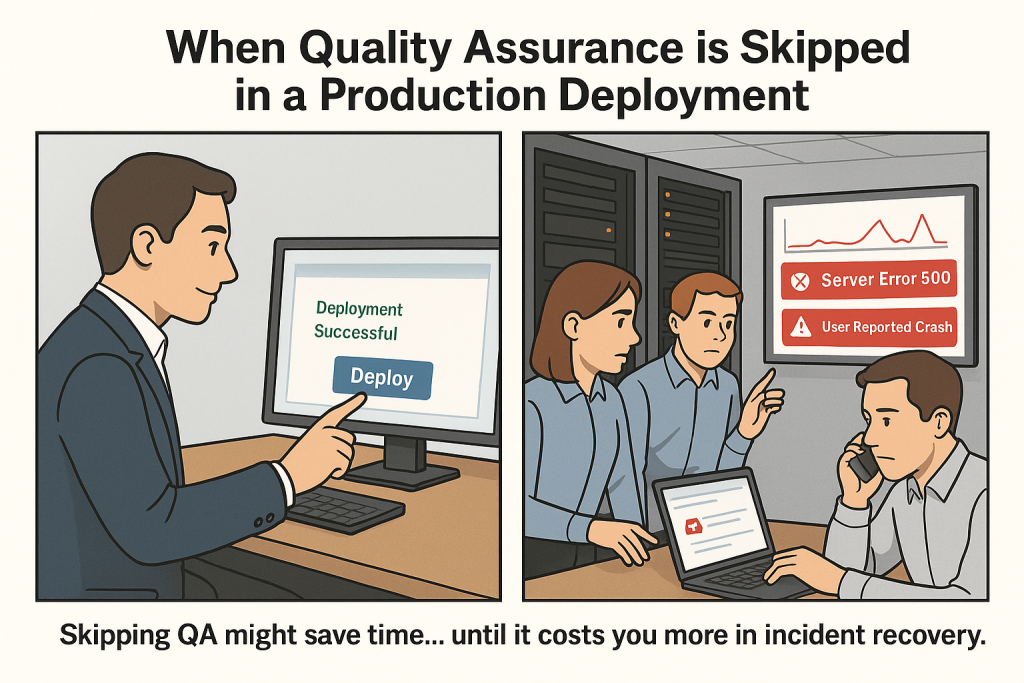Introduction
Have you ever clicked a button on a website and nothing happened? Or maybe an app closed by itself? These are bugs – small mistakes in software. But while they may look minor, the effect they can have on a business is massive.
In this blog, we’ll show how a simple bug can lead to money loss, angry customers, and even business failure.
💥 What is a Bug?
A bug is a problem in a computer program that makes it behave the wrong way. For example:
- A payment page doesn’t load
- A mobile app crashes
- A wrong price shows up in your cart
These issues may look technical, but they cause serious business problems.
📊 How Bugs Affect Business
Let’s take a look at this chart:
Explanation:
- Revenue Loss: If people can’t pay, the business loses money.
- Brand Damage: Users lose trust in your product.
- Customer Churn: Frustrated customers leave.
- Operational Cost: More time and money spent fixing bugs.
- Compliance Risk: Bugs in sensitive systems can lead to legal trouble.
🧾 Real-Life Bug Disasters
🚨 Knight Capital (USA)
In 2012, a bug in their trading software cost them $440 million in 45 minutes. The company never recovered.
🛒 Amazon Sellers (UK)
A pricing error caused products to be listed for £0.01. Some sellers lost their entire stock for almost nothing.
📱 Facebook Ads
In 2020, advertisers were charged extra due to a system bug. Facebook had to issue refunds and lost trust for a while.
🧠 Not All Bugs Are Equal
Some bugs are small. Some are dangerous. Let’s compare:
| Bug | Looks Small? | Business Risk |
|---|---|---|
| App crashes once | Yes | Low |
| Submit button doesn’t work | Maybe | High |
| Wrong tax added | No | Very High |
✅ How to Prevent Serious Bug Impact
- Test Early: Don’t wait until launch. Start testing when development begins.
- Automate Testing: Use tools to test common features every time you update.
- Talk with Business Teams: Developers should understand which parts of the app matter most for business.
- Fix Fast, Learn Faster: When a bug happens, fix it quickly and learn from it.

Here is a simple bar graph showing how software bugs can affect different areas of a business. The higher the bar, the greater the impact.
🎯 Final Words
Even one small bug can damage a brand or cost a company millions. That’s why businesses must treat bugs seriously – not just as a technical problem, but a business threat.
👨💻 Remember: A bug in software is a hole in your business.



